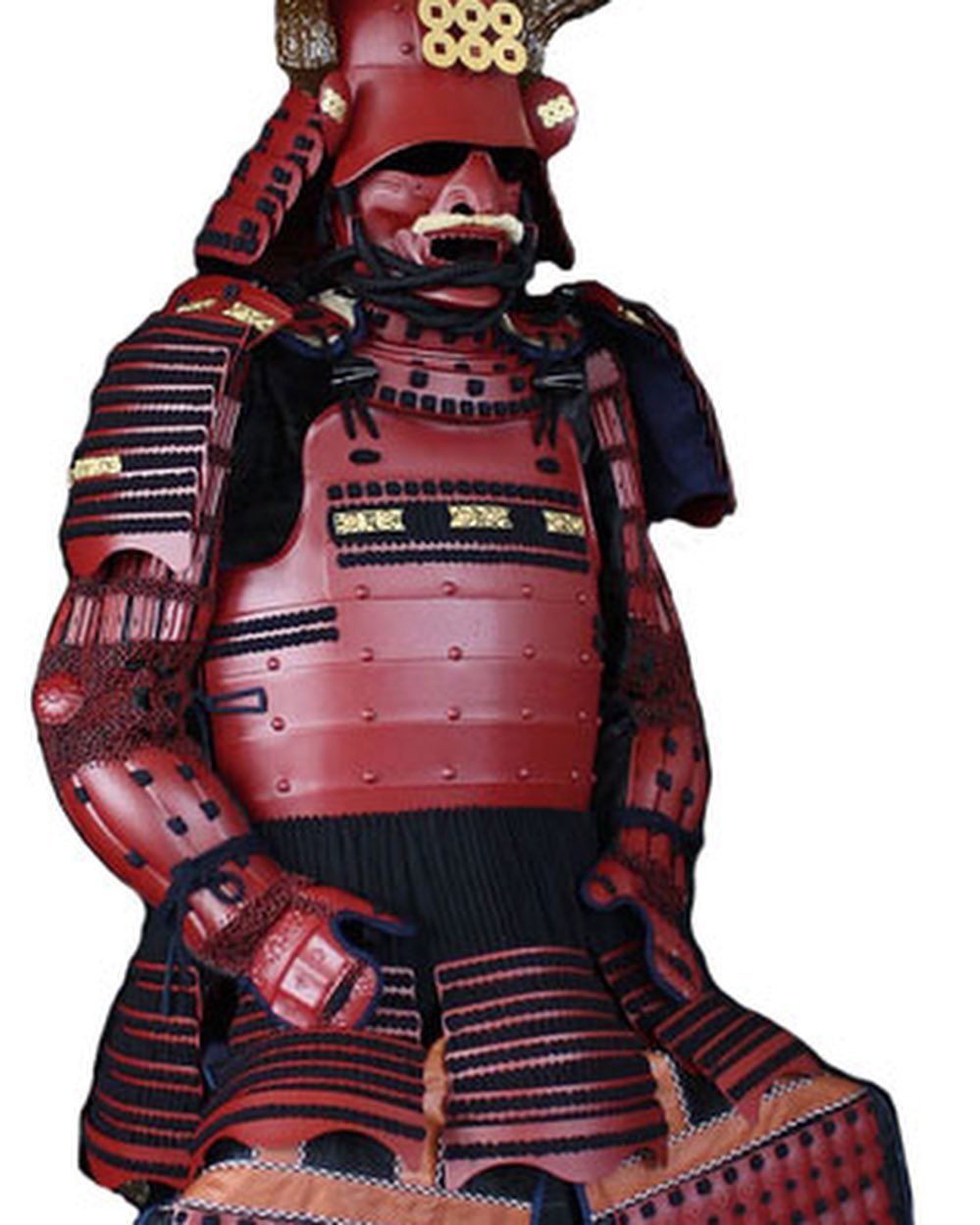By lyuesword | 06 June 2022 | 0 Comments
Ō-YOROI : The Samurai Armor
We hear glorious samurai tales of honor, valor, and loyalty attributed to their strict adherence to the code of conduct, bushidō, or “the way of the warrior.” Samurai were the Japanese nobility of medieval and early modern Japan.
The ō-yoroi (大鎧) or “great armor” is an early Japanese armor worn /by the samurai class during Japan’s feudal era. It combines plate and scales (kozane) laced together (lamellar). Ō-yoroi can be traced to the Heian period in the 10th century. It became popular in the 12th century during the Genpei War, when armor was much in demand. It was designed primarily for cavalry archers, for it was box-shaped and did not allow much movement. In the 15th century, the ō-yoroi was not a favorite choice of armor because the samurai used more infantry tactics in battle.
The ō-yoroi is considered a rich man’s armor, as it was worn mostly by higher ranking samurai on horseback. Lower ranking samurai wore something similar only it had fewer components, was more lightweight, and lacked the decorative aspects of higher ranking samurai. The ō-yoroi’s basic components are known as “hei-no-rokugu” or “rokugu”, meaning “six articles of arms.” The six major components are sune-ate (shin armor), menpo (facial armor), kabuto (helmet), dō (chest armor), kote (armored sleeves), and the hai-date (thigh armor). The material, color, and design of the lacing identified the clan the samurai belonged to. The ō-yoroi truly remains a proud part of Japan’s unique history.
Want a unique sword? Feel free to contact us:
Email: lyuesword@hotmail.com
Website: www.lyuesword.com
Custom Sword Page: www.lyuesword.com/Custom-Sword/customization-options/Create-Your-Own-Swords
 Japanese armor can be traced all the way back to the 4th century. It has developed greatly over the years since it was first used in the battlefield, evolving from the armor used in ancient China and Korea. During the 16th century when European trade was introduced to Japan, the samurai had its first look at European armor. Japanese armor was modified and incorporated with local armor and eventually produced better protection for the wearer.
Japanese armor can be traced all the way back to the 4th century. It has developed greatly over the years since it was first used in the battlefield, evolving from the armor used in ancient China and Korea. During the 16th century when European trade was introduced to Japan, the samurai had its first look at European armor. Japanese armor was modified and incorporated with local armor and eventually produced better protection for the wearer.
The ō-yoroi (大鎧) or “great armor” is an early Japanese armor worn /by the samurai class during Japan’s feudal era. It combines plate and scales (kozane) laced together (lamellar). Ō-yoroi can be traced to the Heian period in the 10th century. It became popular in the 12th century during the Genpei War, when armor was much in demand. It was designed primarily for cavalry archers, for it was box-shaped and did not allow much movement. In the 15th century, the ō-yoroi was not a favorite choice of armor because the samurai used more infantry tactics in battle.
The ō-yoroi is considered a rich man’s armor, as it was worn mostly by higher ranking samurai on horseback. Lower ranking samurai wore something similar only it had fewer components, was more lightweight, and lacked the decorative aspects of higher ranking samurai. The ō-yoroi’s basic components are known as “hei-no-rokugu” or “rokugu”, meaning “six articles of arms.” The six major components are sune-ate (shin armor), menpo (facial armor), kabuto (helmet), dō (chest armor), kote (armored sleeves), and the hai-date (thigh armor). The material, color, and design of the lacing identified the clan the samurai belonged to. The ō-yoroi truly remains a proud part of Japan’s unique history.
Want a unique sword? Feel free to contact us:
Email: lyuesword@hotmail.com
Website: www.lyuesword.com
Custom Sword Page: www.lyuesword.com/Custom-Sword/customization-options/Create-Your-Own-Swords
Leave a Reply
Your email address will not be published.Required fields are marked. *